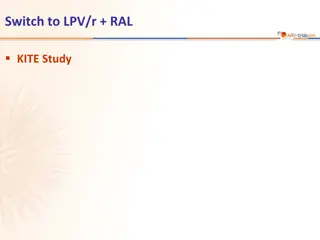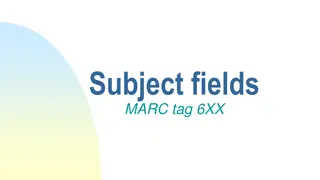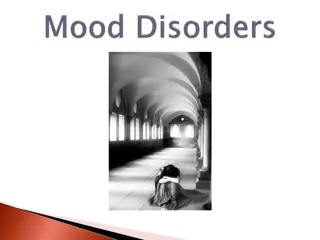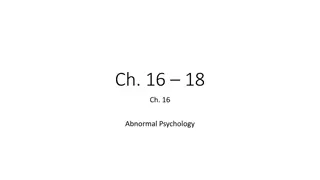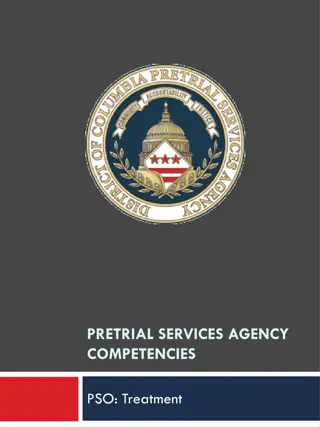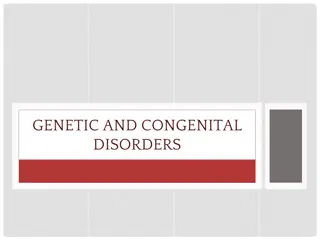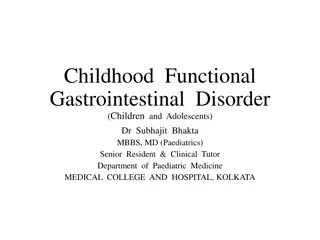Treatment Efficacy of Single Subject Design in Communication Disorders
This study investigates the treatment efficacy of a single subject design approach in communication disorders. It explores the impact of personalized treatment procedures on clients with varying ages, diagnoses, and treatment histories. The results provide insights into the effectiveness of this method in improving communication skills and overall outcomes.
- Treatment efficacy
- Communication disorders
- Single subject design
- Personalized procedures
- Client outcomes
Download Presentation

Please find below an Image/Link to download the presentation.
The content on the website is provided AS IS for your information and personal use only. It may not be sold, licensed, or shared on other websites without obtaining consent from the author. Download presentation by click this link. If you encounter any issues during the download, it is possible that the publisher has removed the file from their server.
E N D
Presentation Transcript
Directions Must use this template format and style Font must be Calibri 24-32 point for all main text You must use the following 8 pages in this template, but may add up to 4 if needed These 8-12 pages must be affixed to a tri-fold poster board. You may select the color and embellish your poster at your discretion. Do not include photographs of the client. You may bring handouts if you like, but they are not required. Rehearse your talk so that you can give it in under 10 minutes.
Title Here Your Name Here Master of Health Sciences in Communication Disorders, Department of Communication Disorders, University Park, IL
Introduction Brief narrative providing rationale for study (2- 3 sentences) End with research question that states the Independent Variable and Dependent Variable and Operational Definition of the Measurement
Literature Review Directions: Summarize in bullet points Tell main findings of your review, including Sources of information about the procedures Previous clinical studies relevant to your decision to use the method you chose Theoretical foundations for the treatment method you chose Cite sources using APA style and include the full citation in the References slide
Method Directions: Provide one bullet point description of each of the following Client (pseudonym or initials) characteristics pertinent to the study: age, sex, diagnosis, treatment history/setting Treatment procedure name and brief description, including materials and instruments Single subject design description including the dependent variable and how it was measured
Results Directions: Brief summary of the following Total amount of time spent in the treatment Number of sessions spent in each phase of the treatment (baseline, treatment, withdrawal, etc.) Reliability procedure and results (e.g. blind scoring, paired scoring, etc.) Amount and direction of change in the dependent variable over time, and whether changes corresponded to the treatment phases as expected (refer to Figure 1)
Figure 1: Title of graph with abbreviations spelled out Here are two sample line graphs that can be modified for your study. Delete the one you don t need. Right-click on the one you want to use and select Edit Data an Excel spreadsheet will open and you can modify the data to match your findings. Sample ABAB Withdrawal 50 45 40 35 30 Axis Title 25 20 15 Sample Multiple Baseline 10 50 5 45 0 40 Baseline Treatment Withdrawal Treatment 35 30 Axis Title Target A You can make many modifications to the graph, including changing the title, customizing the legend, and adjusting the scales and labels. You can also add more rows so that you have one row per session data point. You can grab the corners of the graph box on the slide to enlarge it. 25 Target B 20 Target C 15 10 5 0 Baseline Treatment A Treatment B Treatment C
Conclusions and Clinical Implications Directions: Summarize your findings objectively Tell whether the evidence you collected supports the treatment as having been effective for the client Discuss any practical limitations or problems with implementation of the study and how you would do any future studies differently Conclude with appropriate recommendations for future clinical practice
References All literature cited in the poster must be listed here in APA style. Do not include all of the references that are in your paper unless they were cited on the poster. You may develop and provide copies of a handout for any supplemental material you would like to give, such as further references, resources, procedure descriptions, materials, etc.










